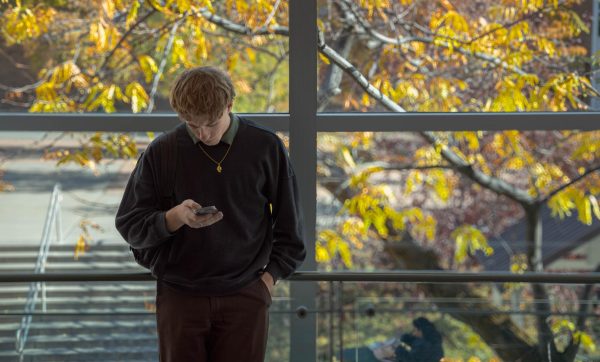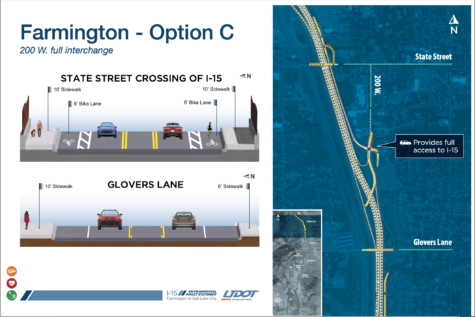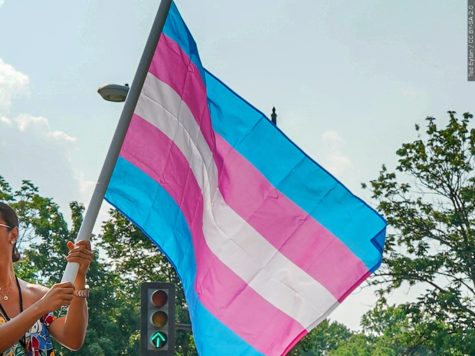Then and now: The truths about transferring
Few changes have impacted college sports quite like the NCAA transfer portal has.
Defined by the NCAA as a “compliance tool to systematically manage the transfer process from start to finish,” the current portal gives collegiate athletes better access to playing for other schools.
According to the NCAA, 11,902 student athletes transferred to another school in 2022 — roughly 15% more than in 2021. Of those athletes, 69% are undergraduate transfers. In 2022, 78% of athletes in the portal landed in Division I programs.
The topic of transferring has been a part of the NCAA’s history for decades. Comparing bylaws from years prior and today, the effects of the changes are important to consider.
Before the Transfer Portal
Shortly before the NCAA put current transfer rules into place, former Weber State cornerback Devin Pugh sued the association, alleging that the bylaws enacted at the time dismantled his football career.
A graduate of Jenks High School in Jenks, Oklahoma, Pugh averaged three tackles and four interceptions per game during his senior season with the Trojans. Recruited to the Wildcats by then-head coach Ron Mcbride, Pugh was offered a grant-in-aid scholarship, a tuition exemption that typically covers other costs associated with college.
Pugh was told that his scholarship would renew annually as long as his academic performance met the necessary standards. That changed in 2011, however, when coach Jody Sears took over.
Recording 19 total tackles and one interception over the span of eight games in 2012, Pugh was told by Sears that the university would not be renewing his scholarship and that he should consider transferring.
Pugh sent highlight tapes to other universities. According to his entry on motion for final judgment or certification of interlocutory appeal, the cornerback had offers from both FBS and FCS Division I programs. That said, each required two years of eligibility for a grant-in-aid scholarship.
In today’s league, Pugh wouldn’t have run into any problems. Before 2018, however, the year-in-residency NCAA bylaw required the cornerback to sit out a year before transferring.
With only two years of eligibility left, a sit out would’ve left Pugh with just one year. The cornerback applied for a hardship waiver — a request that provides an additional year of eligibility to student athletes who are usually dealing with an injury or illness. The NCAA, however, denied the request.
By transferring from a Division I to a Division II program in Colorado State University-Pueblo, Pugh became eligible for a one-time transfer exception and did not have to sit out. That said, by transferring to a lesser division, the cornerback felt his professional opportunities had been limited.
On top of that, Pugh’s new grant-in-aid was not as comprehensive as the one at Weber State. According to the cornerback’s court documents, the scholarship only covered tuition, doubling his student loans to approximately $6,000 per year.
Pugh left the ThunderWolves after an injury. He pursued a job offer and left school with only nine credits remaining to graduate. On Nov. 5, 2015, the cornerback filed a class action complaint against the NCAA, alleging the association violated the Sherman Act.
An antitrust act that’s primarily designed to prohibit collusion, the Sherman Act authorizes the federal government to take action against the formation of monopolies.
Count I of Pugh’s complaint dealt with the NCAA’s policy on capping scholarship numbers, something that’s still done today. Schools like Weber State, for example, are limited to a certain number of scholarships they can give to student athletes.
The second count of Pugh’s complaint said that the year-in-residency bylaw violated the Sherman Act because it “amounted to an unreasonable restraint on trade.”
The NCAA filed a partial motion to dismiss Count II of Pugh’s complaint on Jan. 15, 2016. The court granted the NCAA’s dismissal on Sept. 27, 2016, saying that the eligibility bylaws were “presumptively procompetitive.”
The case was tried in front of the seventh circuit court and was dismissed on Oct. 19, 2017. Due to a non-disclosure agreement, Pugh isn’t able to tell his story.
While Weber State’s associate athletics director for student-athlete support services Will Pridemore doesn’t believe Pugh’s case influenced the NCAA’s decision to make the policy change, he does believe that the transfer portal in its current state provides more symmetry to the system.
“I think people realized that it was a power imbalance between coaches and student athletes when coaches can leave immediately and then coach immediately and then players, who 90% of the time, maybe more than 90% of the time, go to a school because of the coach,” Pridemore said. “If that coach leaves, then they’re stuck there unless they can make a move freely too.”
The current portal doesn’t work for everyone
While today’s transfer portal provides opportunities, Pridemore said that transferring isn’t always the solution.
“The grass isn’t always greener when people decide to leave,” Pridemore said.
Of the Division I athletes who entered the portal in 2022, only 57% reported to have enrolled at a new member school, according to the NCAA. Only 55% of college athletes who received aid at their departing program received aid at their new school.
While Pugh may have had offers from both FBS and FCS programs, many athletes in the FCS are left stuck in the portal. 56% of the 2,085 FCS players who entered the portal in 2022 remained active entrants at the end of the calendar year.
“You’ve got a good thing going probably where you are,” Pridemore said. “If you’re doing what you’re supposed to, you’re probably going to get your scholarship renewed. If you’re pulling your weight in the classroom, on the quarter field and as a citizen, you’re probably going to get your scholarship renewed. When you stop doing at least one of those three things, the odds become higher that you’re not going to be back, but that’s only because you’ve earned your way out of that.”
Athletes the portal helps
While some athlete’s motives for entering the portal are primarily based on wishful thinking, others use the portal to find better playing opportunities.
“The opportunities that opened up because I transferred were just me being able to start my pro career in a better light,” former Wildcat guard Koby McEwen said.
A Mountain West freshman player of the year with Utah State University, McEwen transferred to Marquette University. As a Golden Eagle, McEwen averaged 29.2 minutes, 9.9 points and 3.1 assists per game.
“The main reason why I was looking for opportunities outside of Marquette was that I was trying to extend my pro career,” McEwen said. “My numbers weren’t as good as I wanted them to be at Marquette, and for me to start off getting my first job out of college in terms of the pros, I needed to have better numbers in order for me to start off better.”
McEwen also brought up that it was harder to play for the program after then-head coach Steve Wojciechowski was fired and replaced by Shaka Smart, an event that caused some of his teammates to depart with him.
Looking for new opportunities, McEwen said his conversations with former head coach Randy Rahe helped him decide to come to Ogden.
“Coach Rahe — he showed me that he cared about me outside of basketball,” McEwen said. “It was easy for me to make the decision to come to Weber just because of the love I’d been shown by coach Rahe and just the previous good things I’d heard about him throughout the years of knowing guys who play for him.”
As a Wildcat, McEwen averaged 18.2 points and 2.2 assists per game. The guard was awarded Big Sky Conference Newcomer of the Year at the end of the season.
Since his time at Weber State, McEwen has played internationally and been brought in for NBA workouts. Currently, the guard plays in the NBA’s G-League for Raptors 905.
“Weber was a big part of it,” McEwen said when talking about his professional career. “They’ve helped me put in the work just by having coaches around me to coach me and work me out and be mentors, so they put me in a position to be successful.”
While not all problems related to transferring and eligibility have been solved, the logistics of the current portal have forever changed the landscape of college sports. The NCAA reports that athletes typically enter the portal at the end of their team’s season or the academic year. With summer approaching, it’s likely fans will be speculating on who will be playing where next season.
*Editor’s Note: As a running back for the football team, Dontae McMillan is a member of Weber State University athletics.












